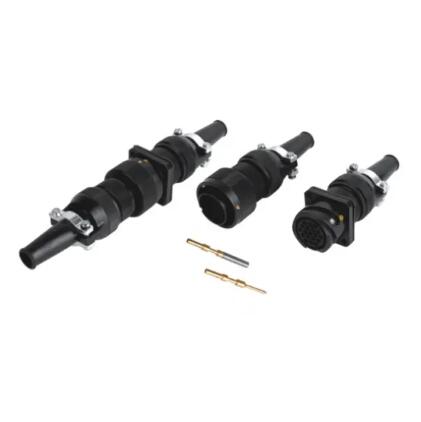Forging Resilience: The Impact of Design on the Reliability of High-Speed Sensor Connectors in Harsh Environments
2024-01-26
Introduction:
In the realm of high-speed sensor connectors, where precision meets adversity, the design becomes a crucial determinant of reliability, particularly in harsh environments. As sensors find applications in increasingly challenging settings, understanding how the design of high-speed connectors influences their resilience is paramount. Let's delve into the intricate world where form meets function, shaping connectors that thrive amidst the harshest conditions.
1. Robust Materials for Environmental Shielding:
The materials chosen for the construction of high-speed sensor connectors play a pivotal role in determining their resilience. Connectors designed for harsh environments are often crafted from materials with high resistance to temperature extremes, chemicals, and mechanical stress. This shields the connectors from environmental factors that could otherwise compromise their functionality.
2. Sealing Against Moisture and Contaminants:
Harsh environments often expose connectors to moisture, dust, and other contaminants. The design of reliable high-speed sensor connectors incorporates effective sealing mechanisms to create a barrier against these elements. Sealed connectors prevent the ingress of moisture and particles, preserving the integrity of the internal components.
3. Vibration and Shock Resistance:
In industrial, automotive, or aerospace applications, connectors are subjected to vibrations and shocks. The design of high-speed connectors takes these challenges into account, employing features such as secure locking mechanisms, strain relief, and vibration-resistant materials. This ensures that the connectors maintain a stable connection even in dynamic and demanding environments.
4. Temperature Tolerance:
Harsh environments often entail extreme temperatures, ranging from scorching heat to freezing cold. The design of high-speed sensor connectors incorporates thermal management features, allowing them to withstand temperature fluctuations without degradation or failure. This temperature tolerance ensures consistent performance in environments where sensors are deployed.
5. Corrosion-Resistant Coatings:
Exposure to corrosive substances, whether in industrial settings or marine applications, can jeopardize the reliability of connectors. The design of high-speed sensor connectors includes corrosion-resistant coatings or materials to protect against chemical corrosion, enhancing their durability in harsh environments.
6. EMI/RFI Shielding:
Electromagnetic interference (EMI) and radio-frequency interference (RFI) are prevalent in many harsh environments. High-speed sensor connectors are designed with effective shielding to minimize the impact of these interferences on signal integrity. The shielding helps maintain a clean and reliable signal transmission even in electrically noisy environments.
7. Secure Locking Mechanisms:
The reliability of connections is a critical aspect of high-speed sensor connectors. The design often incorporates secure locking mechanisms that prevent accidental disconnections due to vibrations or other external forces. This ensures a stable and uninterrupted flow of data even in environments with constant movement or mechanical stress.
8. IP Ratings:
Ingress Protection (IP) ratings are a common measure of how well a connector is protected against environmental factors. High-speed sensor connectors designed for harsh environments often boast high IP ratings, indicating their resistance to dust, water, and other external elements.
9. Compliance with Industry Standards:
Adherence to industry standards for environmental testing and ruggedization is a key aspect of connector design. Connectors that comply with these standards have undergone rigorous testing to validate their reliability in harsh conditions, providing users with confidence in their performance.
Conclusion:
In the challenging landscapes where sensors operate, the design of high-speed sensor connectors becomes a safeguard against adversity. The choice of robust materials, effective sealing, resistance to vibration and shock, and other design considerations collectively contribute to the reliability of these connectors in harsh environments. As technology continues to push the boundaries, the evolution of connector design will remain pivotal in ensuring seamless connectivity and data transmission in the face of environmental challenges.



